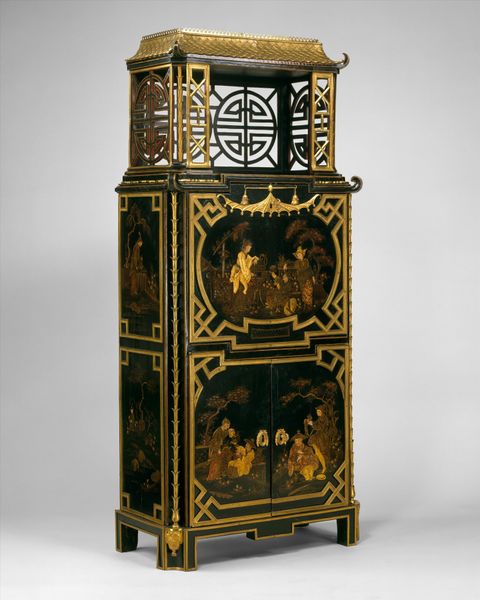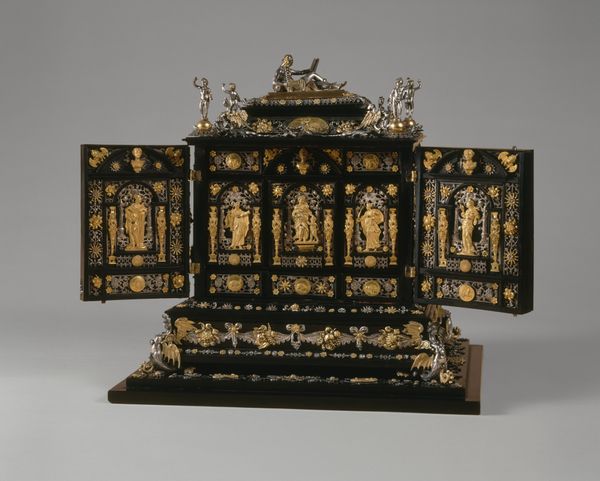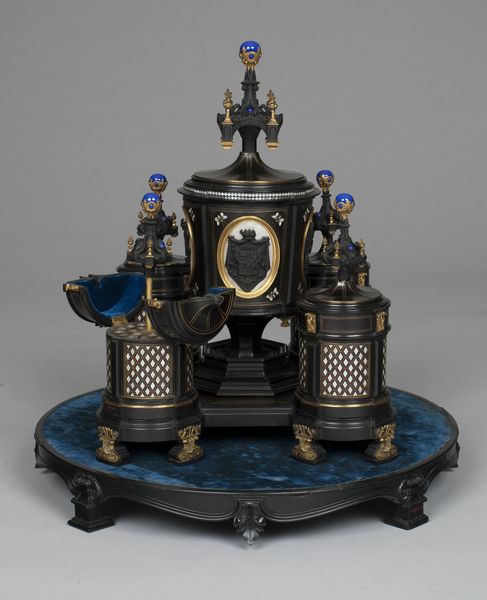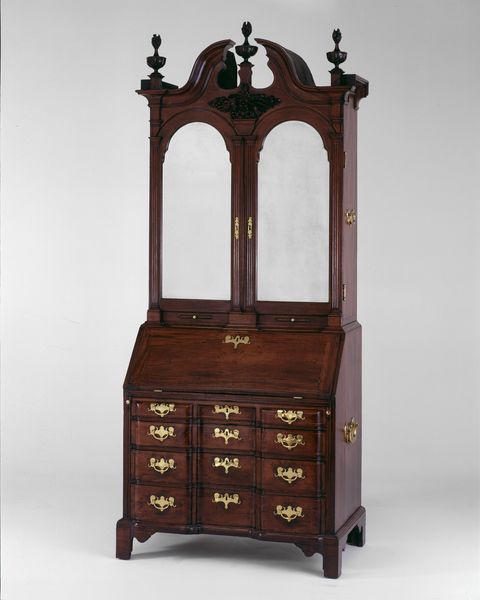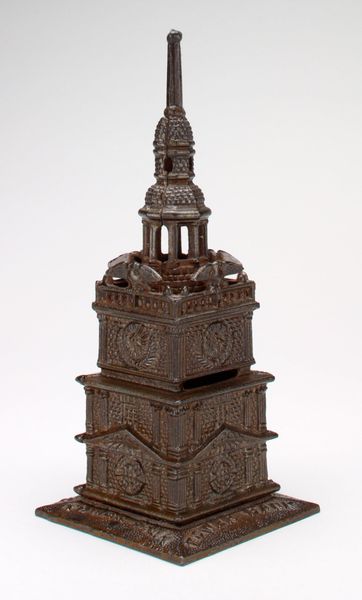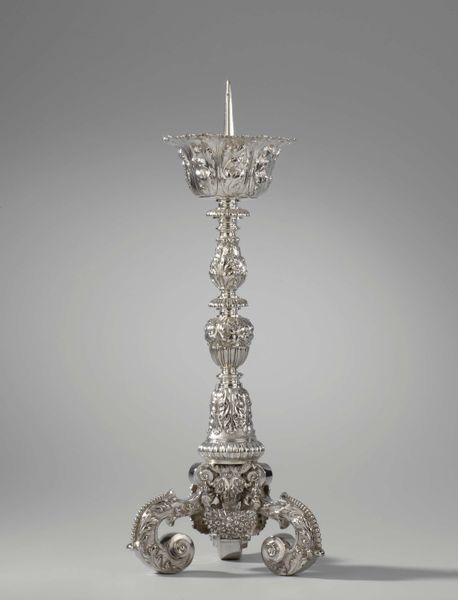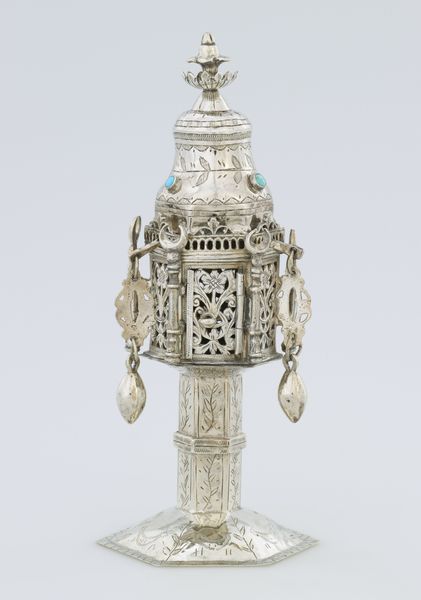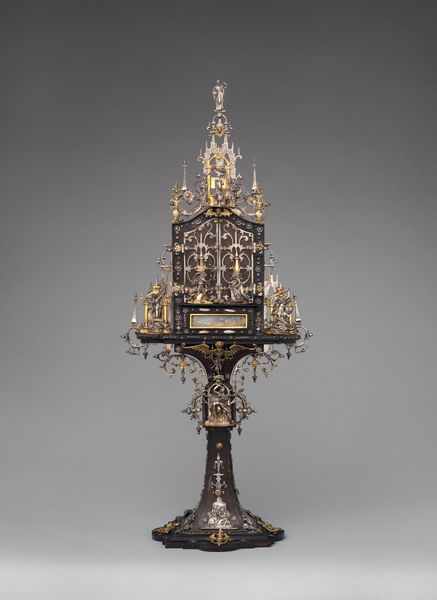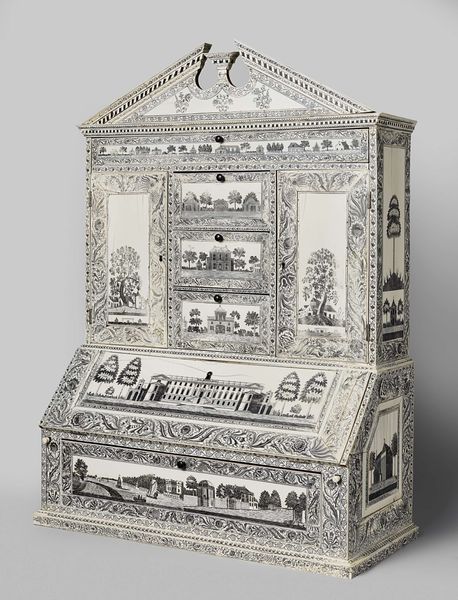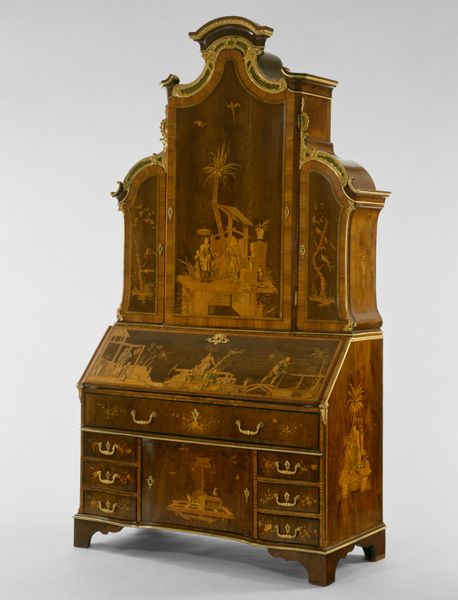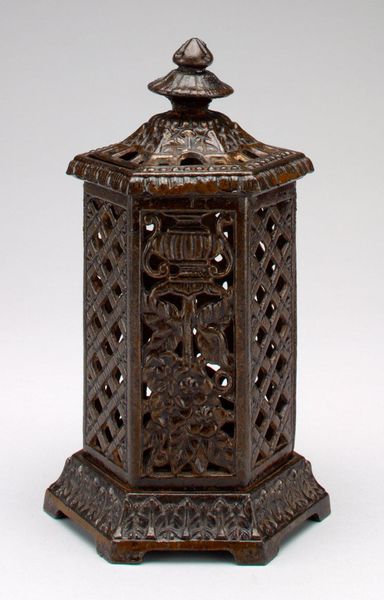
carving, relief, sculpture, wood, ivory
#
carving
#
baroque
#
sculpture
#
relief
#
furniture
#
sculpture
#
wood
#
decorative-art
#
ivory
Dimensions: 160 × 110.5 × 64.8 cm (63 × 43 1/2 × 25 1/2 in.)
Copyright: Public Domain
Editor: This "Cabinet," created around 1640 by Adam Eck, is a stunning piece of Baroque decorative art, crafted with wood and ivory. The dark wood contrasted with the detailed ivory inlay creates such a striking effect! I'm really drawn to how intricate the design is. What stories do you see embedded in this cabinet, particularly regarding its social context? Curator: The cabinet, indeed, speaks volumes about the socio-economic realities of its time. Consider the ivory, a precious material obtained through colonial exploitation, embedded within a piece of furniture intended for private display. This speaks directly to the politics of luxury and the relationship between Europe and the wider world. Editor: So, you're saying it represents not just wealth but also the systems of power at play? Curator: Precisely. Think about who owned such a cabinet. It would have been someone affluent enough to partake in global trade, someone whose status was implicitly tied to the suffering caused by colonization. This connects directly to questions about cultural appropriation and exploitation, things we're still wrestling with today. How might we understand this object in relation to current debates about ethical sourcing and repatriation? Editor: It definitely adds a layer of complexity, considering the origins of the materials. So much labor and resources just for personal display…it makes me consider how luxury items today reflect our own societal values. Curator: It should also make you question the very idea of 'decorative art' as somehow separate from 'high art.' What is at stake when we elevate paintings but diminish the social and political significance embedded in crafted objects like this cabinet? It is essential to scrutinize what values our canons of art history perpetuate, don’t you agree? Editor: That’s a great point. I hadn't thought about the inherent biases in categorizing art like that. I'm definitely going to look at decorative arts differently now. Thanks for highlighting these points!
Comments
No comments
Be the first to comment and join the conversation on the ultimate creative platform.
